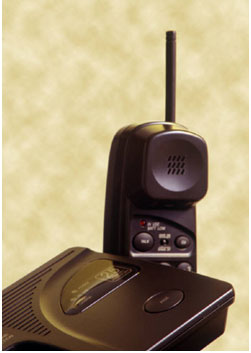Take a look at your inbox at work. How many unread messages
are being displayed? Now, take a look at your personal email box. How many of
those gems pile up before you take on the task of clearing out the old only to
be replaced by more?
Articles on email efficiency, best practices, etiquette and
more are all over the Web. Email can be overwhelming for some users. One has to
think, while going through their inbox on a daily basis and removing
superfluous messages and the occasional spam message that gets through, that
there has to be a better way. Noted technology and social media guru Amber Mac recently posted
a video interview with an executive at Microsoft who takes month-long
sabbaticals from email to attend to more important matters.
 |
| Is your inbox becoming an answering machine? |
Answering machines were created in the end of the 1800’s.
However, it wasn’t until 1984 that they really boomed, when phone providers
started letting customers buy and own their telephone equipment. During the
course of their history, answering machines went from a way to get a message
when you weren’t available, to a device used to avoid taking calls when not
convenient, to a way to screen your calls, to a device that people largely
ignored, often hanging up before leaving a message.
This last iteration
of the answering machine life-cycle was likely a result of people starting to
be overwhelmed and deleting messages before they listened to them, potentially
missing important information in the process. While there are some answering
machines still in use today, they have largely become an obsolete physical
device replaced by electronic voicemail, which went through much the same cycle
only more rapidly.
According to research in 2010 by the Radicati
Group , the average corporate email user sends and receives about 110
emails per day. Roughly a fifth of that email is unwanted or unsolicited.
(Although, depending on the user, on a bad or busy day the number of unwanted
emails can reach closer to 100%.) For private accounts the opposite is largely
true. People are inundated with messages; not just the 97% of it that is
worthless spam, but the 3% that is real information. It can be, and often is,
more than anyone can handle in a given day. Add to that, the emails received separately
on social and professional networks, and it can get pretty darn overwhelming.
The result, in most cases, is ignored messages.
Email has, in a way, become a sort of stream of information from
which people pick and choose what to read and what to reply to, often missing
something important because of the sheer volume. This is true of both corporate
and private users. Meetings have to be rescheduled. Deals are stalled. Or
worse, you might miss out on the 50%-off, four-hour tablet sale for which
you’ve been waiting as a consumer.
Text messages, social media, smart phones and instant
messaging are also cutting into email’s usefulness as a means of communication.
(Although, the advertising and marketing explosion occurring in these realms is
likely going to destroy their usefulness even faster than electronic
voicemail.) If you want to get a hold of someone, heck if you want to see
someone while talking, it’s as simple as pressing a button and pointing your
phone at your face.
It seems as if email is at a crossroad. Much like the answering
machine on which people hit delete before getting to the end, people are starting
completely ignoring e-mail at times. Every day may become a sabbatical of
sorts, either by intention or purely for efficiency’s sake.
Much like the smart phone ads suggest, it appears as if
email is quickly becoming, “so 18 seconds ago.” Waiting for a reply to your
urgent messages is becoming a thing of the past. If an immediate response is
needed, one only has to send a quick text or jump on Skype to ping their
target. It’s hard to fathom but, instant chat, services like Skype, video chat,
and potentially, resurgence in phone use, will likely replace e-mail to some
extent in the coming years.
